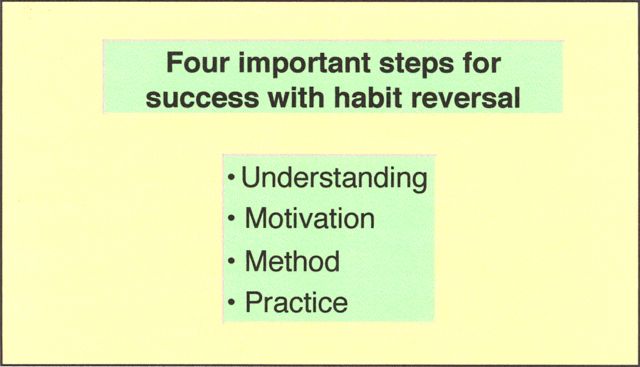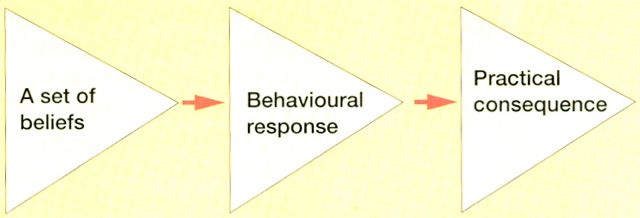Motivation for change: desirable outcomes
Success using habit reversal in the treatment of chronic atopic eczema depends on four important steps:

Of these, motivation is always important to review before starting. The Combined Approach to atopic eczema is summarized by referring to three levels, and three dimensions - and motivation is part of Dimensions 2 & 3: attitudes of self, and attitudes of others.
Attitudes are a set of beliefs linked to our usual behaviour:

Attitude about a problem will be behind the behavioural response involved, and the problem will be linked to practical consequences that explain why the response is seen as a problem.
If problematic practical consequences are reviewed, and more desirable results realised through discussing a change in behavioural response, motivation to adopt a new behavior can be generated. The principles of motivational interviewing are relevant here: it is unhelpful for anyone to be told what is necessary. What is needed is for the personal predicament to be placed in the centre of the assessment, and for the person concerned to identify their own desirable outcomes: quality of life effects should be part of this discussion.
The attitude they, and others, have had to begin with, and which helps explain what has been happening, is however challenged. If the motivation to change is sufficient to practice a new behavioural response for long enough to achieve desirable outcomes, a new set of beliefs will emerge, reinforcing the new way of coping.
In the case of The Combined Approach for chronic atopic eczema, previous passive pessimism is then replaced in five weeks of treatment by active optimism.
As a recent patient remarked:
“The programme is a complete success and has changed my life in a way I never thought possible.”
